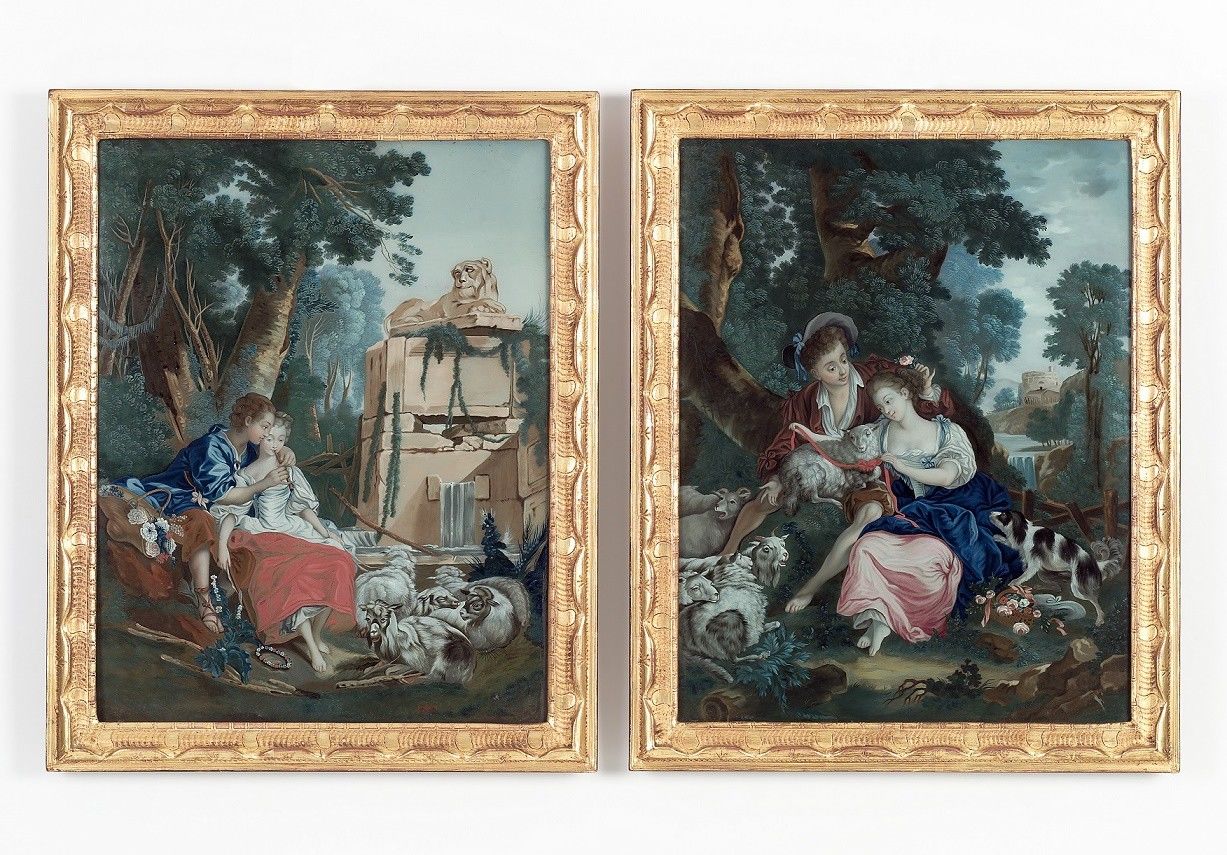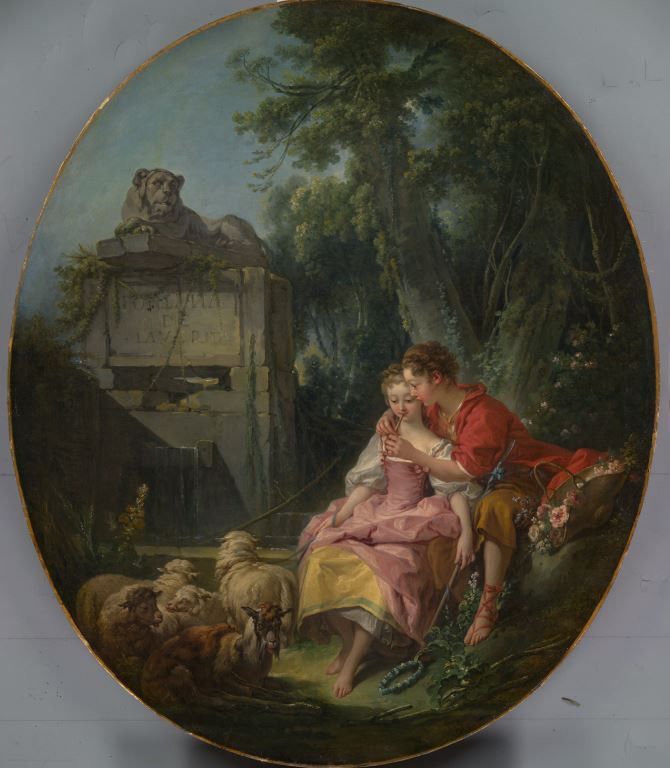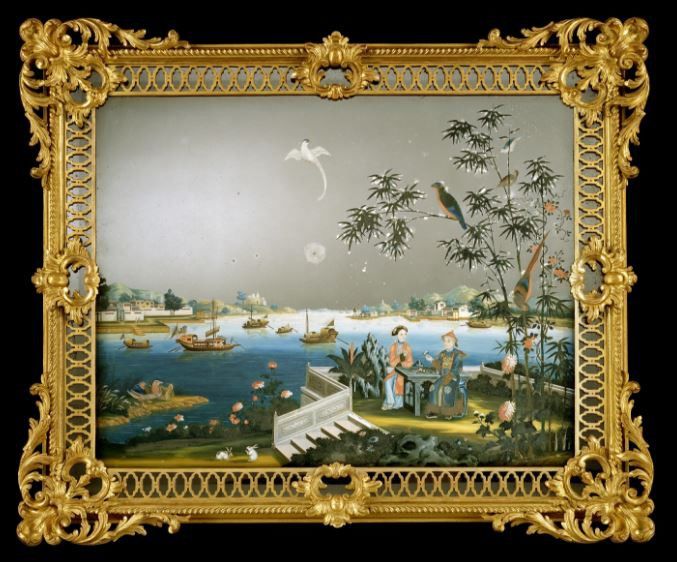A Taste and Talent for Treasures: Kollenburg Antiquairs
Mischo van Kollenburg is a Dutch antique dealer, specialised in 18th century European (and in particular Dutch) furniture, works of arts and 'objets de goût et de vertu'.
With an absolute talent and taste for treasures and passionate about antiques, Mischo van Kollenburg manages to find the very best quality and the most beautiful furniture and decorative arts every time again. The quality and variety of his collection are impressive and outstanding - one can say the maxim “only the best is good enough” sure does apply to Mischo van Kollenburg.
Kollenburg Antiquairs is based in Oirschot, a small but picturesque village in the South of the Netherlands (near Eindhoven).
Since 2006, Kollenburg Antiquairs has been participating in various renowned art fairs and exhibitions, such as PAN Amsterdam, BRAFA in Brussels, Fine Art Asia in Hongkong and (since 2015) TEFAF Maastricht, the absolute zenith of the international art world.
Chinese craftsmanship meets French elegance
It would be impossible to comment on and praise all works of art offered by Kollenburg Antiquairs in a single article - one could easily write a voluminous book about the collection, comprising of (amongst others) 18th century furniture, paintings, clocks, mirrors, tapestry, ceramics, sculptures and Asian art. Personally, I was very intrigued by two Chinese 'reverse glass paintings' after paintings by two illustrious French artists, François Boucher and Charles Eisen.
Two Chinese reverse mirror paintings, after paintings by François Boucher; ca. 1775. (Left: L’Agréable Leçon Right: Le Mouton Favori)
L’Agréable Leçon
One of them is titled 'L’Agréable Leçon' ('the entertaining lesson'), after a painting by François Boucher.
In a landscape of trees, with a picturesque fountain, we see a pair of herds - a pastoral arcadia (although rather idealised and unrealistic) was a popular theme and almost considered an ideal in the 18th century.
A young herd, dressed in a heavenly blue coat and wearing sandals reminiscent of ancient Rome and Greece, and an elegant herdess are snugged up to each other; the boy lets the girl play on the flute - not without any ambiguity, most probably. One of the sheep is tied to a ribbon held by the herdess, the rest of the flock is reposing at her feet. The pastoral scene is completed with a floral wreath lying on the ground and a straw basket with flowers, no doubt freshly picked by the shepherdess before being diverted by the charm of the herd and the spell of his flute play.
François Boucher (1703-1770) was one of most celebrated decorative artists of the 18th century and worked as a painter, draughtsman and etcher; in particular his drawings in red chalk (“sanguines”) distinctly show the great virtuosity of this grand master of the French Rococo.
Boucher is especially known for his idyllic, arcadian, voluptuous and sensual paintings, often with classical and mythological themes, decorative allegories and pastoral scenes, passionate and intimately amorous.
This reverse glass painting offered by Kollenburg Antiquairs is characteristic for Boucher’s oeuvre.
L'Agréable Leçon, François Boucher, 1748; oil on canvas, 92.5 x 78.6 cm
National Gallery of Victoria, Melbourne, Australia.
The original painting, on which this reverse glass painting is based, was an oval shaped painting, executed by Boucher in 1748 and presented at the Paris Salon as “Un tableau ovale représentant un berger, qui montre à jouer de la flûte a sa bergère” (“an oval scene representing a shepherd who learns his shepherdess to play the flute”).
On the pediment of the fountain, the words “Fontaine de la Vérité” (“fountain of the truth”) can be seen - a detail which lacks on the reverse glass painting.
The original, also known as 'La Leçon de Flûte' ('the flute lesson'), measuring 92.5 by 78.6 cm, can currently be seen in the National Gallery of Victoria, Melbourne, Australia.
The engraver René Gaillard (circa 1719-1790) made an engraving (in a rectangular shape) of Boucher’s painting, then belonging to the collection of Monsieur Périnet, with the title 'L’Agréable Leçon', dedicated to the Count de Coigny.
It must have been an immediate success: a few years later, between 1757 and 1766, this scene was even modelled into a sculpture in soft-paste 'biscuit' porcelain by the Manufacture Royale de Porcelaine de Sèvres with the title 'Le Flûteur' ('the flute player').
Le Mouton Favori
The pendant of 'L’Agréable Leçon', in a similar gilt frame, is titled 'Le Mouton Favori' ('the favoured sheep'). Again, the setting for this bucolic scene is a wood, with a creek (even with a modest waterfall) and a romantic ruin in the background.
A shepherd and shepherdess - quite similar to the other two - are sitting next to each other; the young man has a sheep on his lap and holds a rose over the girl’s head, while she is going to tie a red ribbon with a bow around the neck of the apparently favoured sheep. Some sheep resting by the shepherds feet and a dog begging his mistress for attention with a mixture of curiosity and jealousy all add to an atmosphere of affection.
Like many 18th century pastoral scenes, it is symbolic rather than literal, an allegory on the power of love and devotion.
Le Mouton Favori, R. Gaillard (18th century) after Charles Eisen (1720-1778);
Paris: chez l'Auteur, rue S. Jacques, au dessus des Jacobins, circa 1755.
This reverse glass painting has been based on another engraving by René Gaillard, after a painting (now considered lost) titled 'Le Mouton Favori' by the notable French genre painter Charles Dominique Eisen (1720-1778), whose paintings were immensely popular with an art market eager for romantic and idyllic images.
Charles Eisen has been described as "a real libertine, whose debauchery shocked his contemporaries even in that far from prudish century” (Jean Adhémar, Graphic art of the 18th century (1964), p. 53).
The famous Madame de Pompadour (1721-1764), mistress of king Louis XV of France, a great admirer of Boucher, was fond of the work of Eisen as well and managed to have him appointed 'peintre de la cour' (court painter). Charles Eisen was even granted the honour of instructing Madame de Pompadour in drawing, a privilege ensuring court favours as well as aristocratic patronage.
This engraving by Gaillard was mentioned in various publications.
In 1767, the French periodical L’Avantcoureur wrote about the engraving 'le Mouton favori': “tandis que la jeune beauté orne son Mouton de rubans, le Berger place une rose dans les cheveux de son amante” (“while the young beauty adorns her sheep with rubans, the herd places a rose in the hair of his lover”).
The herd and herdess were “aimable et piquante” (“of an amiable and sensual”) and the whole scenery was rendered “avec beaucoup d’intelligence et de goût” (“with a lot of intelligence and taste”).
In 1774, a Dutch publication, discussing various engravings, mentions “le Mouton favori” as an art print “in den Franschen smaak” (“in the French taste”), where a “herderinne (...) een lam, op des herders knie rustende, een lint omhangt, dat haar hondje tot jaloersheid schynt te verwekken” (“where a herdess puts a ribbon on a lamb, resting on the knee of a herd, which arouses jealousy in her dog”).
Chinese sophistication meets French elegance
Reverse glass (or reverse mirror) painting ('achterglasschildering' in Dutch, 'Hinterglasmalerei' in German) is a very difficult and delicate technique.
The image has to be applied directly on the glass and therefore in an unusual order: first, the details in the foreground are painted, then various figures in the background are added step by step, layer by layer.
It’s the direct opposite of what one would do when painting the image on a canvas or panel, where one starts with the background.
The reverse glass paintings offered by Kollenburg Antiquairs have been made in China circa 1775, as an export product intended for the European market.
In the 18th and early 19th century, a thriving export market existed for Chinese reverse glass paintings, adored for their vibrant colours and exotic flavour. “This is an art which is almost lost in Europe, but is very successfully practiced in this country.
This style of painting suits the Chinese artists very well as it exhibits the splendour of their colours”, as the English traveller Dr Charles Toogood Downing noted in the late 1830’s.
A George III Chinese export mirror painting of a seated couple in traditional dress;
The painting: Chinese export, Qianlong, circa 1760. The frame: English, 20th century.
In the 18th century, Chinese painting art was considerably influenced by Western art, above all by the Italian Jesuit missionary Giuseppe Castiglione (1688-1766), who arrived in China in 1715.
Father Castligione was invited by the Chinese emperor Kangxi (1654-1722), who was very interested in European art, and served as a painter at the imperial court, as well as under the reign of his successors, emperors Yonghzheng (1678-1735) and Qianlong (1711-1799). Castiglione combined a Western style with Chinese sensibility and themes, adjusting some Western techniques to suit the Chinese taste.
Although he learned to paint in oil on glass and the Qianlong emperor commissioned Castiglione to paint large mirrors, no reverse glass paintings by Castiglione are known today. However, his contribution to the genre and the influence of Western art on the art of painting in 18th century imperial China - although primarily an export art - is evident.
European traders supplied Chinese artists with prints with western subjects, to be copied in these bright and splendid colours on glass. At some point, a dealer must have requested a local artist to copy these two engravings by René Gaillard.
Artists, working in and around Guangzhou (Canton), meticulously copied European originals in oil paint on the glass with a Chinese brush.
Do not be fooled or alarmed by the idea of a Chinese copy: reverse glass painting was an art in itself, just like engravings or etchings - often copies of paintings or drawings - are still works of art of their own. Because of their age and vulnerability (and therefore rarity nowadays), fine Chinese trade paintings on glass, like these two excellent examples, merit great artistic recognition.
In the 18th century Europe, they were considered the height of fashionable sophistication.
Main Image: Portrait of François Boucher (29 September 1703 – 30 May 1770) by Gustaf Lundberg (1741)





